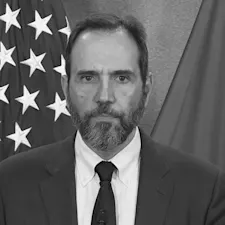
Budget Cuts Blamed as Texas Families Bury Their Dead After Flood
The Texas Hill Country was devastated by a sudden and deadly flood over the July 4 weekend, claiming at least 135 lives as of July 17, with the most recent reports confirming that more than a quarter of those killed were children. Around 100 people are still missing. The flash floods along the Guadalupe River overwhelmed communities, igniting anger and raising serious questions about whether recent staffing and budget cuts to the National Weather Service (NWS) under the Trump administration's Department of Government Efficiency (DOGE) contributed to the disaster's severity.
A Disaster That Unfolded in Hours
The floodwaters surged with alarming speed. In less than a day, some areas reportedly experienced rainfall exceeding 12 inches, far surpassing the 7 inches forecasted by the NWS flood watches issued the previous afternoon. The Guadalupe River gauge at Hunt reportedly recorded a 22-foot rise over just two hours, eventually recording a level over 29 feet before the gauge was submerged and stopped functioning. Local officials described the event as unprecedented, with Kerr County judge Rob Kelly saying there was "no reason to believe that this was going to be anything like what's happened here," despite the region's history of flooding, according to the Texas Tribune.
The rapid rise of the river and the overnight timing left little time for evacuation or preparation. Flash flood warnings began early in the morning on July 4, triggering emergency alerts on cell phones. Yet many residents and campers were asleep or unfamiliar with local flood risks, limiting the effectiveness of these warnings. Kerrville City Manager Dalton Rice acknowledged the speed and intensity of the flood made it difficult for officials to respond effectively, noting that the camps affected were private and that warnings came too late to prevent tragedy. "This is not like a tornado where you can have a siren. This is not a hurricane where you're planning weeks in advance. It hit hard and things like this happen in a very strategic, very isolated area and when those two things converge you have what happened today," as reported by the Texas Tribune.
Staffing Cuts and Forecasting Capacity
The disaster has reignited debate over the impact of staffing and budget cuts to the NWS, which have been ongoing since the Trump administration's DOGE initiative began. The NWS, part of the National Oceanic and Atmospheric Administration (NOAA), has experienced significant layoffs and vacancies in recent years, including the firing of probationary employees shortly after President Trump's return to office.
Former directors of the NWS warned in an open letter to "the American people" that these cuts left the nation's official weather forecasting entity severely understaffed just as the country entered its busiest season for severe storms, as reported by Time. They expressed concerns that understaffing could degrade forecasting capabilities and increase risks to public safety.
Despite these concerns, the NWS Austin/San Antonio office stated it was operating normally at the time of the disaster, with adequate staffing and technology to issue timely forecasts and warnings before and during the flood. Greg Waller, a service coordination hydrologist with the NWS West Gulf River Forecast Center, confirmed the office was functioning as expected, but said that "In my career, this is our worst case scenario that we brief all of our new forecasters on," as reported by the Texas Tribune.
However, staffing data shows vacancies remain: the San Angelo office has four openings out of 23 positions, and San Antonio has six vacancies out of 26, according to the Texas Tribune. While legislative representatives argue these numbers are sufficient for issuing warnings, critics contend that the loss of experienced meteorologists and key leadership roles could have compromised the NWS's ability to coordinate effectively with local officials during the crisis.
Multiple Warnings Issued Amid Rapid Flooding
The NWS issued a series of flash flood warnings starting shortly after midnight on July 4, including a flash flood emergency at 4:03 a.m., which is reserved for life-threatening situations. This emergency warning urged immediate evacuation to higher ground, based on a combination of rainfall data and on-the-ground reports indicating imminent danger.
These warnings triggered the Emergency Alert System and Wireless Emergency Alerts, sending notifications to cell phones and broadcast media in the affected areas. The alerts were reportedly updated multiple times throughout the day as conditions worsened.
Despite these efforts, the rapid rise of the river and the overnight timing meant that many residents were caught off guard. The floodwaters reached major flood stage hours after the initial warnings, leaving little time for many to react.
The Challenge of Predicting Flash Floods
Meteorologists emphasize that predicting the exact location and intensity of flash floods remains a challenge, especially in complex terrains like the Texas Hill Country. Chris Vagasky, a meteorologist at the University of Wisconsin, noted that while the signal for heavy rainfall was clear, pinpointing where the worst flooding would occur is difficult, as reported by Time.
The timing of the flood — overnight during a holiday weekend — further complicated response efforts. Many residents and tourists were asleep or unfamiliar with local flood risks, reducing the effectiveness of emergency alerts. J. Marshall Shepherd, director of the atmospheric department at the University of Georgia, pointed out that while there were "ample weather warnings," the messaging and public preparedness for such a sudden and severe event remain areas needing improvement, according to Time.
Political Reactions and Calls for Investigation
The tragedy has sparked political controversy. Senate Democratic Leader Chuck Schumer called to "open an investigation into the scope, breadth, and ramifications of whether staffing shortages at key local National Weather Service (NWS) stations contributed to the catastrophic loss of life and property during the deadly flooding," as reported by Time.
When asked about rehiring meteorologists fired under his administration, President Trump said, "I would think not. This was a thing that happened in seconds, nobody expected it, nobody saw it. Very talented people are there and they didn't see it," according to Time.
White House press secretary Karoline Leavitt described the floods as a "once in a generation natural disaster," and said questions raised by Schumer and others were "falsehoods," as reported by Time.
Former NOAA administrator Rick Spinrad acknowledged that many weather forecast offices are not fully staffed, which places extra burdens on remaining employees. He cautioned that without adequate research and staffing, the quality of forecasts for hurricanes, tornadoes, floods, and other disasters will degrade, compromising public safety, according to Time.
What This Means for You
The Texas floods laid bare a sobering truth: when critical safeguards falter, nature exploits every weakness. Lives were lost not just to rising water, but — critics argue — to a system stretched thin by years of budget cuts and staffing shortfalls.
While officials maintain that the Weather Service fulfilled its responsibilities, others contend that unfilled posts and lost institutional knowledge may have delayed coordination or dulled the warning system's edge. The tragedy has reignited debate over whether cost-saving reforms left forecasting operations too fragile to withstand a worst-case scenario.
Disasters like this aren't going away — they're coming faster, fiercer, and with no respect for holiday weekends. The question now isn't just whether the next one will hit. It's whether the country will be better prepared — or whether this flood becomes a grim warning of what happens when infrastructure is trimmed too close to the bone.
References: Did the Weather Service Stumble Ahead of Fatal Texas Floods? | TIME | Severe weather hits the US hard as key forecast offices reel from Trump cuts | US weather | The Guardian | Was the Hill Country sufficiently warned about Texas flooding? | The Texas Tribune | Texas flooding live updates: Death toll reaches 133, search continues for missing | Death toll in Texas July 4 flooding climbs to 135 people, including 116 in Kerr County area | The children lost in the Texas floods, remembered by their loved ones






















